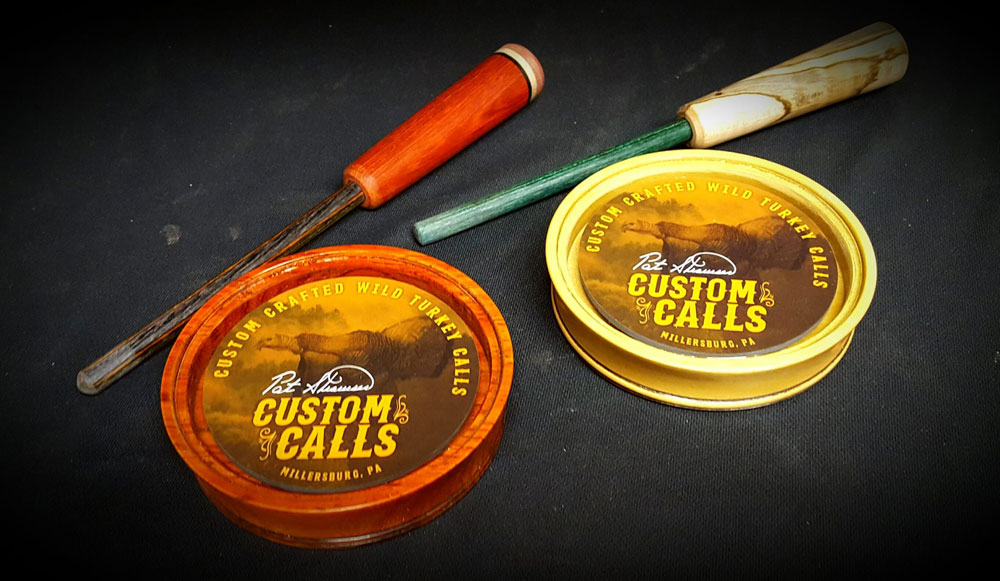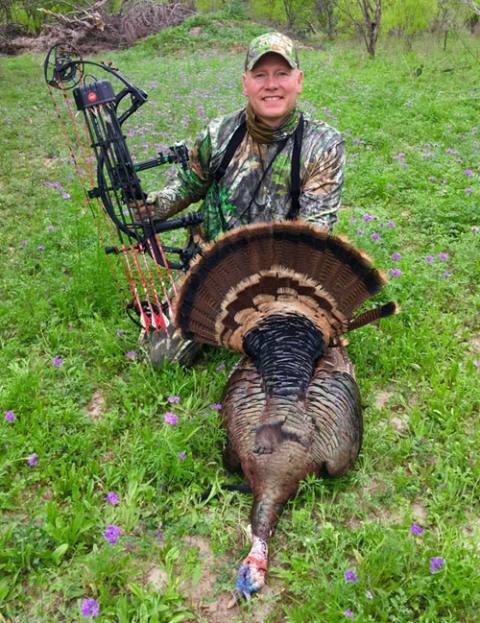Mossy Oak National ProStaff member Pat Strawser of Millersburg, Pennsylvania, has been hunting and calling turkeys for 35 years. He started entering turkey calling contests in the 1980s.
Pat Strawser | Mossy Oak ProStaff

My mentor D.D. Adams liked to build slate calls, and others started building and perfecting the glass calls. As I mentioned earlier, those first glass calls were made from window pane glass, because that was all the material available at that time. We learned that the glass was a very effective medium for making turkey calls.
I guess another factor that got me so interested in friction calls was winning the National Wild Turkey Federation (NWTF) Grand National Friction Calling Division three times with the calls I’d built. I thought I could win it the fourth time, but Matt Van Cise got in ahead of me.
Besides winning the NWTF Grand National, I've also won the U.S. Open a couple of times, our state championship many times and the Masters Invitational Turkey Calling Championship three times several years ago. Winning the Masters was second only to winning the Grand National in turkey-calling events. Some of the turkey-hunting legends’ names are on the Masters plaque, including Denny Gulvas, Dick Kirby, Chris Kirby, Walter Parrott, Matt Morrett and others.
Back in the early days, many of us on the turkey-calling circuit didn’t really care how much money we could make calling in a contest. Most of us probably would have driven to Alaska and entered a contest for only a $50 first-place prize just because we wanted to compete in a turkey-calling contest.
I believe the slate call has the truest tone of a wild turkey. Today, because of information on Facebook and many different types of recorded turkey calls, most callers believe that they have to give very raspy calls to sound like an authentic turkey. I can do that with a slate call. However, if you listen to hens calling, especially early in the morning, they most often give very clear, clean yelps. That’s where I believe the slate call is really at its best. I’ll admit that you can’t give calls as loudly on a slate call as you can on a titanium or a glass call, but I believe you can get loud enough to call in a turkey.
When I’m holding a wood pot with a slate top, I feel like I'm stepping back into the early history of turkey calling and making turkey calls. I like the pot for my pot call to be made from either walnut, cherry or chestnut wood. Of the three, I tend to like the chestnut pot the best. The chestnut pot is lighter and not as dense as the other two woods. The sound resonates really well, and it’s very dry and very stable. In the early 1900s, a blight hit the chestnut trees in this country, and finding chestnut wood was almost impossible. So, the chestnut I’m using today is reclaimed chestnut wood that once was used to build old barns. This makes the wood very old and very stable. Plus, that wood looks good.
I also make box calls. I like the old Neil Cost style box call. My box calls are built as a tribute to Neil who started that particular design of box calls.
My favorite, most realistic box call is made from a butternut box with a black walnut lid. I like a hard striker, which is the lid of the box call. I also want to have a soft wood base as the box, which isn’t a solid rule in building box calls but rather a general rule. When you strike the edge of the box with the black walnut, you get a higher-pitched beginning to your calls. Then when the call breaks over to the “yulk,” you get that deep yulk at the end of the call. So, as a general rule, I like to have a heavier wood lid and a softer box.
I only build about 500 pot calls and about 100 box calls a year. Usually, I build less than 100. I build more like 60 or 80 box calls a year.
I think interest in the market for custom calls has grown in the last few years because of the internet and social media. Before the internet and social media, very few people knew the names or the reputations of call builders. Only competitive callers really knew who the major turkey-call builders in the United States were. The reputation of a call builder was spread by word of mouth. When internet usage increased and social media gained steam, orders for my calls went through the roof. Every major call maker in the country experienced the same spike. Back in the day, when there were more outdoor writers, more magazines that carried stories about turkey hunting and turkey calling, and more newspapers had outdoor writers, some call makers got more ink than other call makers, and that helped grow their businesses.
There’s no question that social media is really what has created the boom in the custom-call business. The major part of the custom-call business once occurred just before turkey season. However, today we’re building and selling custom calls pretty much all year long.



























